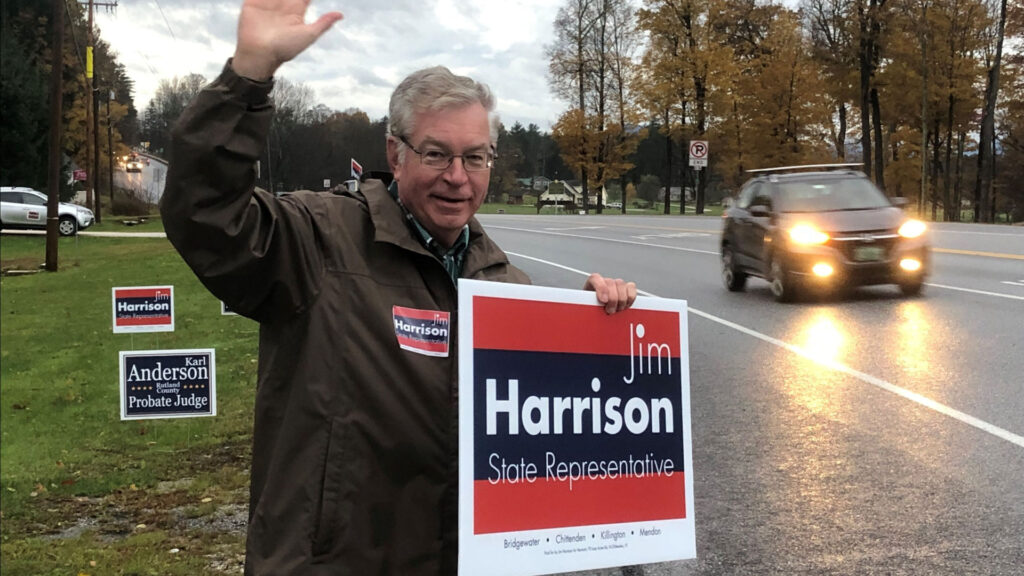Election saw lowest turnout in a decade
Staff report
The fact that there were few contested statewide races likely contributed to the lowest voter turnout in a decade. Those that did vote, last Tuesday, overwhelmingly voted for the incumbents.
Governor
Republican Governor Phil Scott ran unopposed for the Republican nomination. He will run for a fifth term as governor.
Democrat Esther Charlestin, of Middlebury, will face Gov. Scott in the Nov. 5 General Election, after beating Peter Duval, of Underhill. Charlestin is the first Black woman to secure a major party’s nomination for governor.
Charlestin won 49% of the vote to Duval’s 19% (24,016 to 9,387), according to unofficial results from the Secretary of State’s Office. An unusually high 32% of voters wrote in another name or left their ballot blank.
Lt. governor
Incumbent Lt. Gov. David Zuckerman, of Hinesburg, defeated challenger Thomas Renner, of Winooski, 28,671-18,843 for the Democratic nomination.
On the Republican side, John Rodgers, of West Glover, defeated Rutland’s Gregory Thayer, 13,839-8,619 for the Republican nomination.
This race was the most closely watched statewide contested race in this election cycle.
Senate races
In Bennington County, both seats were in play following the death of Dick Sears and Jane Campion’s decision not to run again.
Democratic Rep. Seth Bongartz, of Manchester, handily won one of the seats. Rob Plunkett, a deputy state’s attorney from Bennington, won the other seat in a write-in campaign garnering 20% of the vote, according to the Secretary of State’s office. According to VTDigger, write-ins accounted for 30% of all votes cast and were directed at more than 10 different candidates.
In Windsor County Democratic voters re-elected Senate Majority Leader Alison Clarkson of Woodstock and Sen. Rebecca White of Hartford to the State Senate. The remaining Democratic seat nomination, vacated by Sen. Dick McCormack, of Bethel, who is retiring, was won by newcomer Joe Major, the Hartford treasurer, executive director of the Upper Valley Aquatic Center, and current president of the White River Junction Rotary. Major also sits on the boards of the Upper Valley Haven and Northern Stage Theater and the Vermont League of Cities and Towns.
On the Republican ballot, a four-person race for the three GOP nominations resulted in three victors crossing the finish line — Jack Williams, Andrea Murray, and Jonathan Gleason.
House races
In the Rutland-Bennington House district race, Chris Pritchard, of Pawlet, claimed the Republican nomination over Ronald W. Lacoste, of Wells, 360-122.
Low turnout
Not since 2014 had so few people voted in Vermont’s primary elections.
On Tuesday, fewer people participated in choosing the Democratic and Republican nominees for November’s general election than in any of the four previous election cycles, according to the state’s unofficial results.
Only 15% of Vermont’s registered voters cast a ballot, according to state elections director Séan Sheehan, a sharp drop from the 27% turnout rate in 2022, or the record-breaking 34% turnout rate in 2020. According to the Secretary of State’s website, the highest turnout was in Guilford at 42%.
The Democratic primary saw about half the number of voters — around 50,000, according to preliminary totals — as the 2022 primary, when more than 102,000 voters turned in a ballot.
On the Republican side, participation dropped from over 30,000 votes cast in 2022’s primary, to fewer than 25,000 votes in Tuesday’s election. There are over 506,000 registered voters in Vermont, according to the Secretary of State’s office.
This summer’s primary season was particularly sleepy, with competitive primaries in only 14 of the state’s 109 House districts and in just seven of the state’s 16 Senate districts. For the first time in 68 years, four of Vermont’s major party federal primary races featured no competition at all.
“How much of a turnout happens in August is often fairly dependent on how many contested races there are,” Sheehan said.
Sheehan contrasted Tuesday’s election with the 2022 primary, when staggering levels of turnover — from Vermont’s first two open congressional seats in 16 years, to four open statewide races — led to much higher participation rates.
The unsurpassed 2020 turnout, Sheehan said, was due to the effects of the Covid-19 pandemic, which prompted the state to mail a ballot to every registered voter. That year, 73% of voters turned in absentee ballots, according to Sheehan.
Since then, Vermont has reverted to its previous election system, wherein voters must request a mail-in ballot if they want one. Although this year’s rate of absentee voters — about 30% — was lower than the 2020 primary, it is still about double the 2018 primary rate, according to Sheehan.
“That is a shift that happened with the pandemic. The plateau (for absentee voter rates) is significantly higher now than it was before then,” Sheehan said. “I think a lot of people like getting their ballots, doing their candidate research, in the comfort of their own home.”
A longer view of Vermont’s turnout in the August primaries reveals that Tuesday’s 15% rate is not so extraordinary. The state has seen lower rates in three other election cycles in the past 20 years, including 7% in 2008, 12% in 2012 and 9% in 2014.
Higher turnout rates often correspond to hotly contested races, such as an open governor’s seat, like the 23% in 2010 — when Republican Gov. Jim Douglas did not seek reelection — and the 25% in 2016, when Democratic Gov. Peter Shumlin decided to retire.
Nevertheless, at a press conference Wednesday, Gov. Phil Scott expressed his disappointment at Tuesday’s low turnout rate and questioned whether the state had really gotten “the will of the people.”
“You hear a lot of complaints about what’s happening in our state, and we need people to vote to change it,” Scott said.
Sarah Mearhoff/VTDigger contributed to this reporting.

Jim Harrison holds a campaign sign along Route 4 in Mendon. He won re-election as state rep for the Rutland-11 district (Chittenden, Killington, Mendon and Pittsfield.




